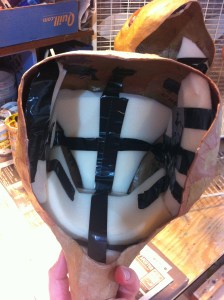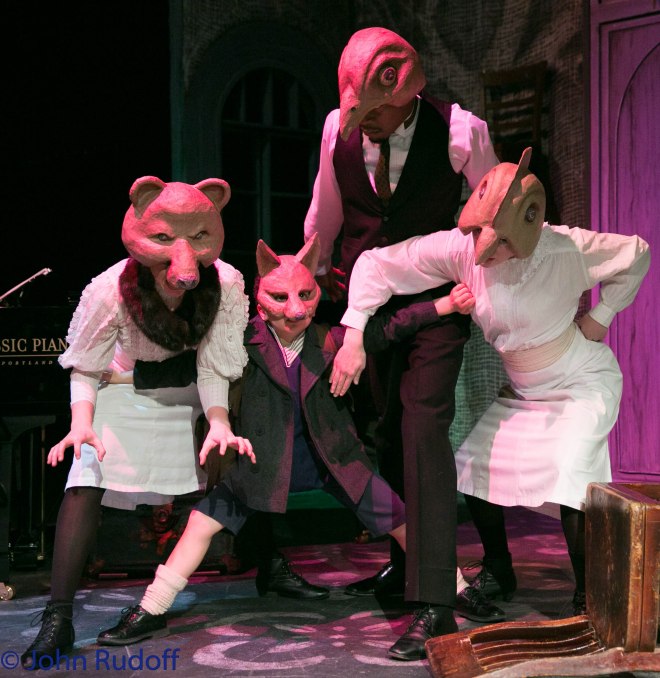 Hoping for a Remount in Fall 2015!
Hoping for a Remount in Fall 2015!
Over the course of the last three years, I’ve had the great pleasure to work with Many Hats Collaboration’s Jessica Wallenfels and Eric Nordin (and a slew of other talented artists) on the development of an original work of dance theater, The Snowstorm. It’s been a great journey, and I want to share a little of that process with you in this post.
Beginnings
Creating original work requires a lot of skills, in addition to having a vision for the show. Among these are communication, collaboration, being present, creative problem solving, flexibility, comfort with ambiguity, etc. The process was always a pleasure—largely due to the talents and leadership of Wallenfels and Nordin—and it also took us in many directions.
I played a couple of roles throughout. Initially, I worked as an actor to help develop physical vocabulary for some of the key scenes. Through this process, Wallenfels was able to get a sense of what it would take to tell a clear story through movement set against the music of Rachmaninoff.

A year or so later, after many such experiments, a short evening of scenes was presented. One of the things we were trying to determine was if masks were a good fit for the show. Since it was just a test, we used placeholder masks that approximated the feeling of each of the masked characters.
We found we weren’t sure if masks were the best solution. Early in 2014, Jessica and I met to discuss our thoughts on the approach. I had just returned from Bali—and Jessica had been there herself, years earlier—so we thought we could also explore shadow puppets.



I decided to create a shadow puppet show that used the same two pieces of music in the first scene of The Snowstorm. I performed it with a second puppeteer for a Puppet Slam produced by Beady Little Eyes last spring. After more discussion, we decided that the shadows would likely be too difficult to see clearly in the thrust stage at the CoHo. We held on to the possibility of using both masks and puppets as we began to meet with the entire production team.




Researching the various animals in the story came next. Through our meetings, we had decided to go with masks. I tried to find a design concept that would serve the multiple needs of this particular production: a fantastical quality, a handmade look, and an ease of movement were among these needs. As I was working in India, I would make sketches and email them back to the production team so that all of our designs could work well together. Nothing was feeling like it hit the mark, so I tried to think of other ways to solve the problem. Finally, drawing on my recent experiences making a peacock mask for Maya, I proposed using a kind of helmet mask for the show. This option promised an interesting transformation onstage and seemed exciting to build.


Preparing for rehearsal
Typically, I prefer to provide the finished mask at first rehearsal. I feel this way because it allows the actors (who may have no experience performing with masks) to get used to the different performance style they will need to employ. With this show, we knew we wanted to have a little more flexibility and room for discovery. So with the design we thought we wanted in mind, I generated some rehearsal masks to give the actors a sense of what it would mean to perform in the masks.



With the information from the rehearsal room, I was soon ready to sculpt. The discoveries did not really end there, which is really the fun of the whole thing!





The Final Masks
The actors brought the masks to life beautifully! (Shadows still appear in the play, even though they are not the primary element. Knowing the process, it’s interesting to me to see how all of the different artistic impulses eventually found their place in the show.) Here are a few shots from the performance.


Photo: Brud Giles

Wow! My heart is a flutter! Great masks. Also, I love that you are writing about your process. This is a really instructive case study on the process of collaboration, revision and thoughtful choice making.